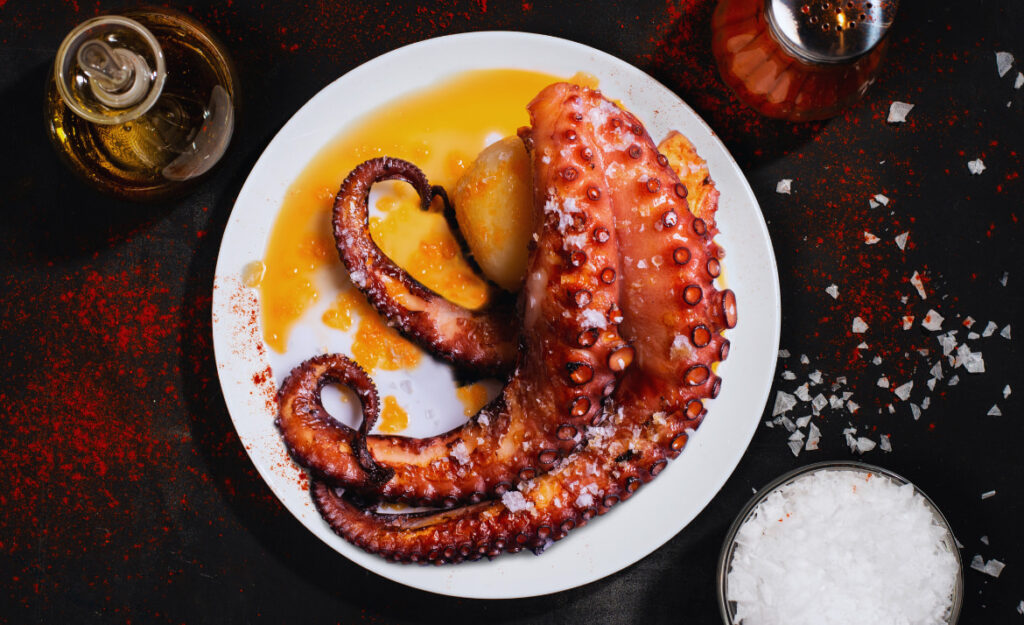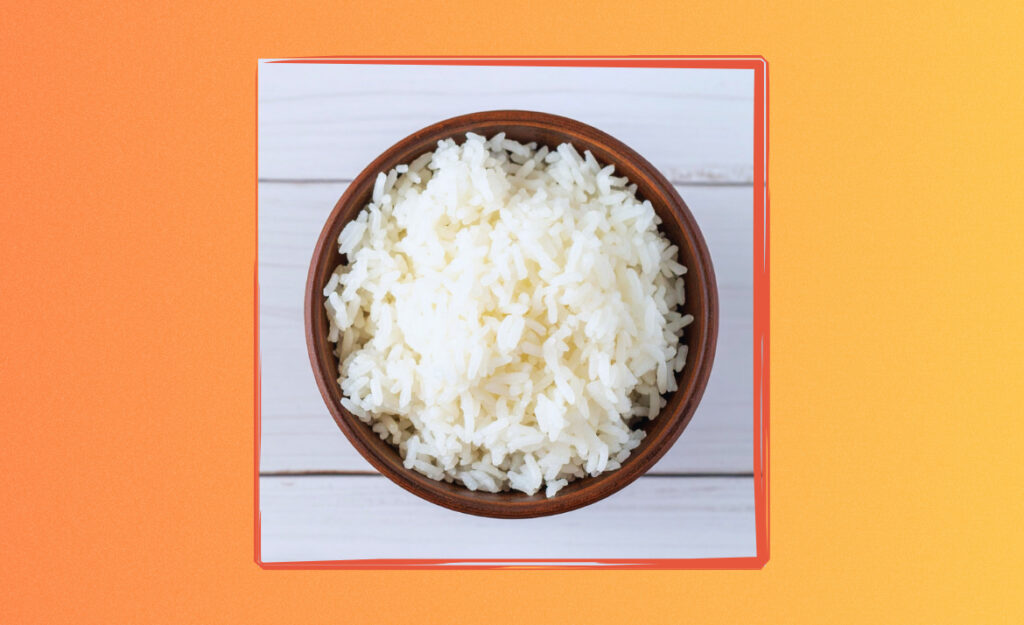
Almost everyone has been there—you take a taste of your dinner and realize it’s uncomfortably salty. Instead of panicking, there are several simple ways to fix salty food and preserve your hard work.
No matter your cooking skill, an overseasoned dish doesn’t call for a total restart. Salty flavors can be adjusted with practical, kitchen-friendly fixes in most situations, letting you enjoy a balanced meal.
This guide covers step-by-step kitchen-tested strategies to reduce saltiness and rescue your meals, with specific examples, checklists, and expert-tested solutions to keep you cooking confidently.

Prevent Pasta from Sticking: Simple Steps for Perfect Noodles
Learn the tricks, from the best water ratios to timing your sauce, for perfectly separated noodles every meal.Immediate Actions: Dilute, Balance, and Rescue Salty Dishes Fast
When you taste saltiness that’s overwhelming, swift action stops your meal from getting worse. Move quickly to dilute or offset strong flavors before they fully absorb into the food.
For many cooks, adding extra water, broth, or unsalted ingredients fixes salty food before it becomes unmanageable. The right approach depends on what you’re cooking and how soon you catch the mistake.
Doubling the Recipe to Spread Out the Salt
Picture pouring too much salt into soup and noticing the error after a single stir. In this scenario, double the main unsalted ingredients like potatoes, vegetables, or meat.
A cook might say, “It tastes salty, but I still have half a bag of potatoes. I’ll add them and top up with water.” This realistically keeps your meal practical and enjoyable.
Stir thoroughly to ensure everything is evenly distributed. Simmer the mix again to infuse the flavors. If you see ingredients crowding the pot, this means it’s time to stop adding more.
Counteracting with Acidity or Sweetness
Lemon juice and vinegar cut through saltiness, especially in sauces, stews, or soups. Add half a teaspoon at a time, taste, and repeat as needed. Balance is key: too much acid introduces a sharp flavor shift.
For tomato-rich dishes, a small spoonful of sugar or honey can soften excess salt. Swirl to combine. Taste-test after each addition to prevent the dish from swinging too sweet.
This adjustment method matches everyday taste checks: “Needs a pinch of sugar, then I’ll see if it evens out.” Stick to small increments for the best results.
| Method | Best for | How it Works | Actionable Next Step |
|---|---|---|---|
| Doubling Recipe | Soups, Casseroles, Stews | Reduces overall salt by increasing unsalted volume | Add matching base ingredients and simmer gently |
| Adding Acid | Tomato Sauce, Curries, Marinades | Cuts salt with tangy counterbalance | Squeeze in small doses, taste, then adjust |
| Adding Sweetness | Braises, Barbecue Sauce | Softens sharp salt with subtle sugar notes | Add half teaspoon at a time, blend, taste |
| Starchy Additions | Soups, Chowders, Broths | Absorbs and distributes excess salt | Add diced potatoes or rice, simmer, then remove if needed |
| Cream/Dairy | Purees, Cream Soups, Pasta Dishes | Smooths saltiness, especially in blended foods | Pour in cream slowly, stir, taste for balance |
Tried-and-True Fixes for Common Salty Food Issues
Identifying which strategy applies saves your dish with minimal fuss. Each fix targets a specific scenario—here’s what to do and why, with step sequences and mini-scripts to guide you.
Use these actionable lists and explanations to stay in control the next time you need to fix salty food in your kitchen.
Adjust Quickly with These Steps
Start by tasting a small bite to measure how salty it actually is. This helps you decide the best method and avoid masking one problem with another.
- Stir in extra unsalted stock: Pour up to 1 cup at a time. This reduces salt concentration but might thin sauces.
- Add peeled, raw potato pieces: In broths or soups, these absorb surface salt. Remove them once tender and discard, then retaste.
- Increase the main ingredient: Double up on vegetables, beans, or grains to absorb and spread out salt, then heat through gently.
- Serve with bland sides: Pair salty foods with plain bread, white rice, or pasta for immediate balance at the table.
- Chill the dish: Cooling food slightly dulls salt perception. This works best for salads or cold grain bowls, not for hot dishes.
Retaste after each adjustment and take pauses, just like experienced cooks do, to gauge progress. This avoids overcompensating and swinging your flavor too far.
Tune Texture and Serving to Offset Saltiness
The texture and presentation of a salty dish affect how the salt lands on the palate. Thickened foods sometimes taste saltier than thinner ones.
- Serve thicker dishes with a creamy topping: A dollop of sour cream on chili softens salt, both in taste and mouthfeel.
- Layer with fresh herbs: Scatter parsley, basil, or dill to add freshness and aromatic distraction from the salt.
- Tuck salty entrees into wraps: Wraps or pita fill with unsalted grains or greens, absorbing the salt for each bite.
- Add chopped avocado: Creamy avocado introduces fat, which lessens the impact of salt in spreads, salads, or tacos.
- Mix with fresh greens: A pile of baby spinach or lettuce stirred into hot dishes wilts and mellows strong flavors instantly.
After making serving adjustments, you can say, “Next time, start with half the salt,” and use the dish as an improvised main course with balanced extras.
Practical Ideas for Every Type of Salty Food
Too much salt can sneak into anything from stews to sauces. Successful cooks tailor their fix salty food methods to the unique challenges of each recipe, so no meal is wasted.
Focus on what kind of dish you have—liquid-rich, creamy, or dry. Each needs a slightly different rescue tactic to bring flavors back to balance.
Sauces, Soups, and Stews: Adjust in Phases
Pour salty sauce into a larger pot and add unsalted liquid, mixing gently. Let it simmer for a few minutes, then taste again after cooling slightly.
If the flavor still feels aggressive, drop in a peeled potato or dash of milk. This softens saltiness further.
Finally, remember to remove thickening agents like potatoes before serving, keeping the texture consistent and flavors smooth.
Grains, Pasta, and Dry Foods: Reset with New Batches
For over-salty cooked rice or pasta, add an equal batch of unsalted grains and mix well. Let steam with the lid on to blend the flavors.
If adding more grains isn’t practical, serve the batch as a base for unsalted vegetables or proteins. This lets every bite mellow out.
Toss leftovers with extra olive oil or lemon juice for a lively, less salty refresh before the next meal.
Smart Flavor Swaps: Using Dairy, Fats, and Acids to Counter Salt
Fats and acids reshape flavors, making them essential for salty fixes. Adding cream or a splash of vinegar prevents dishes from tasting flat while restoring balance.
Working in small measures, you can totally shift a dish’s flavor with minimal effort, making the meal enjoyable for everyone at the table.
Dairy Rescue: Cream, Milk, and Yogurt
Stirring in cream, half-and-half, or a spoonful of unsweetened yogurt into a salty puree or creamy soup brings immediate relief, muting saltiness effectively.
Repeat with half a tablespoon at a time, stirring after each addition. The result feels smooth, soft, and enjoyable, with no obvious signs of tampering.
Even sharp cheeses like feta can double as a salt distractor when sprinkled over the top in moderation, rather than blended thoroughly through the dish.
Fatty Additions: Nuts, Oils, and Avocado
A drizzle of extra-virgin olive oil tempers harsh salt, especially in Mediterranean recipes. Nuts like cashews offer both crunch and fat, enveloping salt grains on the palate.
Sliced avocado absorbs and mellows salt in taco fillings, salads, or grain bowls. Try layering slices on top rather than stirring, to control taste bite by bite.
By pairing salty food with new textures and mouth-coats, fats provide a double relief: distraction for the taste buds and satisfaction for the stomach.
Serving Tricks for Salty Main Courses and Sides
Smart serving choices help rehabilitate a salty main course or side before it hits the table. Don’t try to disguise saltiness entirely; instead, build a balanced plate with complementary elements.
If you’re serving a salty stew, for example, offset with side dishes or toppings to create contrast and restore harmony bite by bite.
Protein Pairings and Plating Tactics
Lay slices of cooked chicken or tofu over a salty stir-fry, rather than mixing them in. This allows the unsalted protein to absorb the dominant flavors more gradually.
In savory pies or casseroles, scoop out some filling and layer with plain mashed potatoes or rice for an adjustable ratio. This split-plating method ensures every guest controls their own bite’s saltiness.
Small bowls of plain yogurt, sour cream, or cottage cheese alongside serve double duty: cooling spicy heat and blunting salt intensity with every scoop.
Lemon, Herbs, and Pickles for Brightness and Balance
Chop fresh parsley, cilantro, or dill and scatter them over finished dishes, creating a fresh, green aroma that distracts from overt salt flavors without masking them.
Add a thin slice of lemon or a spoonful of pickled onions as garnish. These act as palate cleansers that let flavors develop, not stagnate.
This approach mimics what you’d experience at a deli or restaurant, where extras on the plate make salty foods more approachable, with a flavor boost and textural change.
Understanding Why Food Gets Too Salty and Preventing Mistakes
The best defense is knowing how salt accumulates in dishes and forming prevention habits. Taste food at every stage, and measure salt precisely with a small spoon or your fingers.
Some ingredients carry hidden salt—think soy sauce, bacon, or prepared bouillon cubes. Always scan labels and factor these into your calculations before adding extra seasoning.
Measuring and Adding Salt Intentionally
Get in the habit of salting food after main cooking—never before. Each time you add, taste, stir, and note the difference before more goes in.
Use kosher or sea salt for better control and visibility, pouring into your palm first before adding to the dish by pinches.
Remember that ground spices also deepen over time, so wait until the end to check for flavor balance before final salting.
Batches, Leftovers, and Storage Considerations
Meals become saltier after sitting, as flavors intensify. When storing leftovers, taste before reheating and add a splash of unsalted stock or water to refresh flavors.
Label containers with a note, “salty, add noodles,” and reheat alongside fresh cooked pasta or vegetables, so nothing is wasted.
Think ahead by freezing salty soups in small portions. When reheated, stretch with extra broth or mashed potato for a fast, rescued meal.
Takeaway: Fix Salty Food Like a Pro and Enjoy Every Bite
Tweaking an overly salty dish is a skill every cook can master with confidence. Keep common fixes in mind and taste frequently, trusting your instincts and kitchen logic.
By applying these concrete steps, you transform kitchen frustration into food success, learning exactly why salty food happens and what to do next time. Remember: even a mistake can turn into a win.
Pay attention to how flavors shift, then tailor your approach for the dish in front of you. Fix salty food with creative solutions and serve a meal you and your guests will actually enjoy—no apologies necessary.
Frequently Asked Questions
Can adding potatoes really fix salty food in soup or stew?
Peeled, raw potatoes absorb some surface salt but don’t actually pull salt from the liquid itself. They work best as part of a broader fix, including dilution and adding other unsalted ingredients.
What’s the best quick fix for salty sauces?
Add unsalted broth or water in small amounts, mix thoroughly, and taste again. For sauces, a bit of cream, butter, or lemon juice can also round off sharp salt notes and restore flavor.
How can I rescue salty cooked grains or pasta?
Mix in an equal amount of freshly cooked, unsalted grains or pasta. Let them steam together, then retaste. If that’s not possible, serve with unsalted sides to spread out the saltiness.
Do acids like vinegar always work to mask saltiness?
Acids like vinegar and lemon brighten salty dishes but don’t actually lower salt levels. Use them sparingly; taste after each addition to avoid overwhelming your dish with sourness instead of salt.
How do I prevent oversalting food in the future?
Taste at every stage, measure salt in your hand or with a spoon, and keep track of high-salt ingredients like broths or soy sauce. Always add salt near the end, so you have full control.



